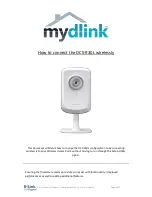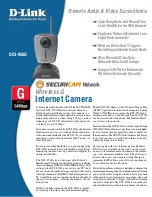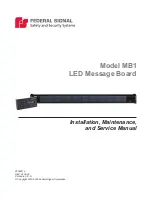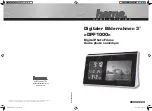
The automatic exposure control (AEC) algorithm adjusts both the exposure time and gain
as part of its algorithm in an attempt to achieve an ‘optimal’ SNR. The AEC algorithm
favours increasing the exposure time over increasing the gain when the image needs to
be made lighter in low illumination conditions and it favours decreasing the gain over
reducing exposure time when the image needs to be made darker. The gain and exposure
settings of the AEC can be modified by use of the ‘Backlight Compensation’ setting
(described above) and the ‘
Exposure, Dynamic Framerate
’ switch (described below).
The AEC algorithm is based on sampling the average luminance in 16 rectangular
subregions within the whole imaging area (these subregions are arranged in a grid 4
regions across and 4 down).
In extremely bright conditions the AEC algorithm will enter into ‘
Light AEC
’ mode (LAEC)
which allows integration time to be less than 1 row.
In extremely dark conditions the AEC will activate '
night mode
' which allows integration
time to be larger than one frame. In night mode, the chip can integrate up to 8 frames by
slowing down the original frame rate and waiting for exposure. This is what enables the
AF51 to be used in medium low light level applications that would otherwise not be
practical for a CMOS cameras of this type.
Night mode and LAEC cannot be set via the manual exposure control (they are beyond
the limits of the ‘
Exposure Time, Absolute
’ range) but they can be entered into and fixed
as a constant setting if the AEC is de-activated when either of these modes is currently
operating. In this way they can be used as ‘one-touch’ fixed settings.
The ‘
Exposure, Dynamic Framerate
’ control is an on (1) / off (0) setting which only
makes a difference when in auto-exposure (‘Aperture priority’) mode. When on, this
enables the AEC to override the camera stream frame rate (selectable by the user – see
later in this manual for the available frame rates) so as to reduce the frame rate even
further for darker illumination scenes to allow longer exposure times. This effectively
allows you to get the maximum light sensitivity in low light conditions when using certain
camera format steams that have a faster frame rate setting. If you set this to 0 then the
AEC range will be limited by the frame rate of the current camera image format stream –
you will be able to image faster moving action but with lower light sensitivity. The effect of
this setting remains constant if you switch off the AEC mode (by setting ‘
Auto Exposure
’
to 0) while ‘
Exposure, Dynamic Framerate
’ is active. In these circumstances, changing
the setting ‘
Exposure, Dynamic Framerate
’ will have no effect until you set a value for
‘
Exposure Time, Absolute
’ or until you re-enter AEC mode by setting ‘
Auto Exposure
’ to
3.
OptArc AF51 Camera Page 29 of 99 User Guide v1.02
















































